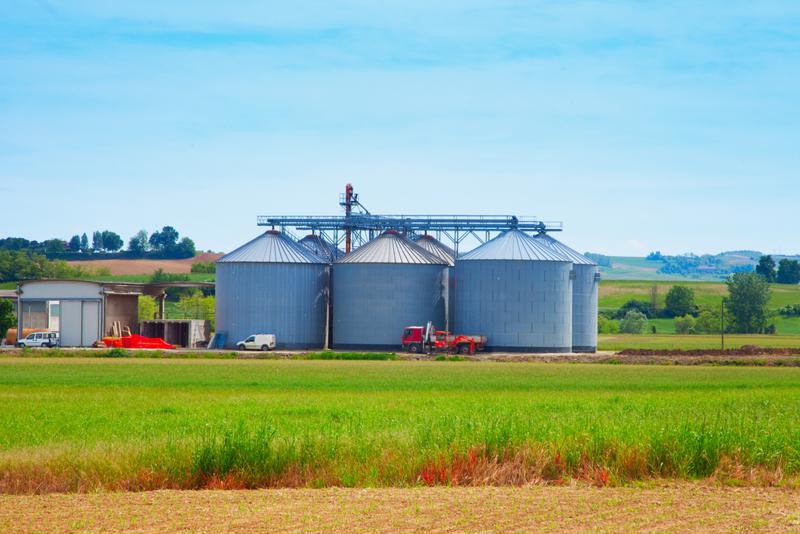
4I and the Impact on AgTech
By Max BurkhalterJanuary 26, 2022
From self-fertilizing crops to drones, the sustainable agricultural technology sector (commonly referred to as AgTech) is changing the way farming operates. The fourth industrial revolution (4I) combines smart data and artificial intelligence to provide outcomes that are impacting multiple industries.
2022 sees growers armed with an array of tech applications the previous generations could only have dreamed of. As outlined in Suren E. Dutia's study, AgTech: Challenges and Opportunities for Sustainable Growth, developments in the tech space are proving to impact work on the land. Farmers are seeing an increase in the amount of agricultural crop harvested and are losing less plants thanks to sensors detecting the presence of damaging pests.
Putting the pieces together
Furthermore, the concept of integrated farming systems is key to the success of AgTech. Combining smart machinery with the latest advancements in data capturing technology and genetic engineering results in innovative methods and systems for the agriculture industry.
Software designed specifically to monitor crop health gives farmers real-time data regarding damaging fungicides. With over 20% of crop yield lost in the United States due to disease or pests, early detection is critical in mitigating risk. With mobile integration, offering analytics and alerts for everything from nitrogen levels to damaging temperature shifts, today's growers start the day armed with a bevy of diagnostic information available to them before they finish their morning coffee.

Smart tech sensors
Traditionally, methods for monitoring crops have been labor intensive. The old days may have warranted individual inspection of every plant, with farmers bending over countless rows of crops to check for appropriate hydration levels, soil health and parasite presence. Advancements in the internet of things (IoT) space like optical sensors designed to predict plant diseases by utilizing hyperspectral techniques and thermography have increased productivity and reduced wear and tear on both farm equipment and farmers alike.
The optical sensors measure soil in three different frequencies. Near infrared, mid-infrared and polarized light spectrums are captured in real time to determine plant data and soil quality, relayed from drones or satellites and beamed to a user-friendly interface in which the farmer can review them. These developments come with a soft learning curve, and serve to offer today's farmers real time data analysis that increases productivity and reduces potential labor-related injury.
The microbe revolution
Agricultural microbial organisms are becoming increasingly prevalent on farms around the world. Composed of pests, fungi and bacteria, these microorganisms are, in fact, beneficial to specific crops when introduced correctly. They are also a boom industry – data collected on Globe Newswire forecasts a market size of $9,087.791 million by 2026.
Microbes that live on crops, such as beans and peanuts, enable their hosts to self-fertilize. Applying these microorganisms to corn, wheat and rice could provide an environmentally friendly alternative to crops that account for over 55% of fertilizer use. Converting nitrogen to ammonia gas naturally, microorganisms living on certain crops essentially provide the same tasks as highly scientific chemical compounds created via traditionally utilized methods. While some challenges remain in regards to the implementation of these microbes, Chemical & Engineering News reported a 2019 deal between Bayer-backed Joyn Bio and NewLeafSymbiotics dedicated specifically to further this AgTech breakthrough.
As many actors in the agricultural space endeavor to move away from traditional chemical-based pesticides and fertilizers, the market for tech regarding disbursement, efficacy and control over microbials continues to grow. With over 16,000 certified organic farms in the U.S. as of 2019, growth in the sector will drive further agriculture and tech industry synergy in the years leading to the 2026 projected market size.
5G farming
The infeasibility of installing miles of fiber optic cable underground in rural America has left many farm operators limited by the connection capabilities of older telecommunication services. With installation costs as high as $10,000 per mile in rural areas, fiber isn't always an option. Broadband service might suffice in the home, but for the demand an average cash crop operation requires it has not always proved sufficient. Limitations that have previously hampered the potential advantages the IoT provides.
Integration services, designed specifically to offer 5G services in rural communities, utilize radio signals in the low-band, a spectrum previously utilized by television channels. Forbes highlights a correlation between increased broadband connectivity and a recent Federal Communications Commission economic analysis, which showed a 1% spike of 25 Mbps/3 Mbps broadband connections per 1,000 households, resulting in a 3.6% increase in corn yields (as measured in bushels per acre).
Growers need powerful tech solutions
When looking for the latest in IoT-powered connectivity, leaders in the agriculture industry turn to Perle. With Power-over-Ethernet (PoE) solutions capable of withstanding -45°C to +75°C temperatures, the ability to monitor crops never succumbs to seasonality. Regardless of the weather, count on Perle PoE to provide the best in sensor technology with power direct to unit in one easy cable.



